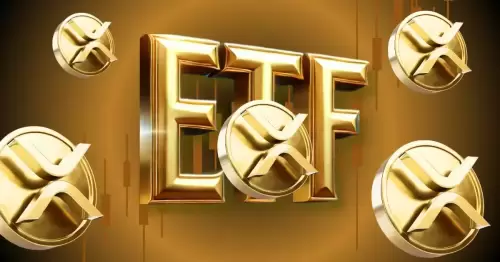 |
|
 |
|
 |
|
 |
|
 |
|
 |
|
 |
|
 |
|
 |
|
 |
|
 |
|
 |
|
 |
|
 |
|
 |
|
Cryptocurrency News Articles
I. Legislative Process: A Dramatic Turn from "Near Death" to "Resurrection"
Jun 12, 2025 at 05:37 pm
From May to June 2025, the U.S. Senate's negotiations over the "GENIUS Act" (full name: "Guidance and Establishment of the U.S. Stablecoin National Innovation Act") can be described as an epic battle intertwining politics and finance.

Author: White55, Mars Finance
I. Legislative Process: A Dramatic Turn from "Near Death" to "Resurrection"
The U.S. Senate's deliberations on the "GENIUS Act" (full name: "Guidance and Establishment of the U.S. Stablecoin National Innovation Act") can be described as an epic battle intertwining politics and finance. This bill, aiming to set the first federal regulatory framework for the $250 billion stablecoin market, experienced a thrilling comeback from "procedural death" to "bipartisan compromise," ultimately advancing to the Senate floor debate stage with a voting result of 68 to 30. However, behind this victory lies months of interest exchanges between the two parties, lobbying battles among industry giants, and the moral controversies sparked by the Trump family's "crypto gold mine."
May 15: After four months of deadlock, the Senate Banking Committee finally reached a bipartisan compromise on the bill to create a federal framework for regulating stablecoins.
May 16: The committee approved the bill with a vote of 16 to 8, sending it to the full Senate for consideration.
June 18: The Senate voted 68 to 30 to invoke cloture on the bill, advancing it to the floor debate stage.
This bill, originally introduced by Sen. Tim Scott (R-SC) in December 2024, faced strong opposition from Democrats due to concerns about consumer protection and financial stability. However, Republicans cleverly framed the bill as a strategic tool for "digital dollar hegemony," while Democrats showed signs of wavering due to worries that a regulatory vacuum could lead to financial risks.
"If the U.S. does not lead stablecoin rules, China will fill the void with the digital yuan," said Senate Majority Leader John Thune (R-SD) in his heated lobbying rhetoric.
II. Core Provisions: Regulatory Blueprint and "Devil's Details"
The regulatory framework design of the "GENIUS Act" attempts to walk a tightrope between encouraging innovation and preventing risks, with its core provisions summarized into six pillars:
Dual Regulation and Issuance Threshold
Stablecoins with issuance scales exceeding $10 billion will be federally regulated (led by the Office of the Comptroller of the Currency, OCC), while those below $10 billion may opt for state-level regulation, provided state standards align with federal ones. This design reassures state autonomy while delineating red lines for giants, seen as a de facto protection for Circle (USDC) and Tether (USDT).
1:1 Reserves and Asset Segregation
Stablecoins are required to be fully collateralized by cash, short-term U.S. Treasury bonds, and other highly liquid assets, with reserve assets strictly segregated from operating funds. This provision directly targets the 2022 Terra collapse but allows for the inclusion of "risk assets" like money market funds in reserves, which has been criticized as laying mines.
Tech Giants' "Tightening Spell"
Non-financial tech companies (such as Meta and Google) must obtain approval from a newly established "Stablecoin Certification Review Committee" (SCRC) to issue stablecoins and meet data privacy and antitrust requirements. This provision is interpreted as a targeted strike against Trump ally Musk's (X platform) stablecoin plan.
Consumer Protection and Bankruptcy Priority
In the event of issuer bankruptcy, stablecoin holders can redeem their assets first, and reserves will not be included in the bankruptcy estate. However, Democrats argue that this provision is weaker than traditional bank FDIC insurance mechanisms and poses a fund freezing risk.
Anti-Money Laundering and Transparency
Stablecoin issuers will be subject to the Bank Secrecy Act, mandating compliance with KYC and suspicious transaction reporting obligations. However, a loophole exists: decentralized exchanges (DEX) will not be bound, leaving a backdoor for illegal fund flows.
Presidential Family "Exemption Loophole"
The bill does not explicitly prohibit members of Congress or presidential relatives from participating in stablecoin businesses, allowing the Trump family's World Liberty Financial (WLF) to legitimize the USD1 stablecoin (market cap of $2 billion). Democratic Senator Warren angrily denounced: "This is a green light for Trump's crypto corruption!"
III. Controversy Maelstrom: Trump's "Crypto Gold Mine" and Bipartisan Fracture
The greatest resistance to the bill's advancement does not stem from policy details but from the Trump family's deep involvement in the crypto industry and the resulting conflicts of interest. Three major points of contention have escalated the political struggle:
"Legalization Arbitrage" of USD1 Stablecoin
WLF's USD1 has injected $2 billion into Binance through an Abu Dhabi investment firm, allowing the Trump family to earn over $80 million annually from transaction fees. More critically, once the bill passes, USD1 will automatically gain federal recognition, potentially skyrocketing its market
Disclaimer:info@kdj.com
The information provided is not trading advice. kdj.com does not assume any responsibility for any investments made based on the information provided in this article. Cryptocurrencies are highly volatile and it is highly recommended that you invest with caution after thorough research!
If you believe that the content used on this website infringes your copyright, please contact us immediately (info@kdj.com) and we will delete it promptly.
-

-

-

- Michael Saylor Rebuffed Fears of Bitcoin (BTC) Winter Return, Suggesting an Upward Trajectory to $1M
- Jun 14, 2025 at 04:50 pm
- Strategy's Michael Saylor has rebuffed fears that a crypto market winter will return, suggesting Bitcoin's increased adoption and constrained daily supply will see it rally to $1 million.
-

-

-

-

-

-

- Blockchain Deposit Insurance Corporation (BDIC) Appoints Oliver Pluckrose as CTO
- Jun 14, 2025 at 04:35 pm
- BDIC, the first to market providing cryptocurrency deposit insurance for digital currency wallets and crypto exchanges, announced today that Oliver Pluckrose has accepted the company’s offer to become the Chief Technology Officer.





























































